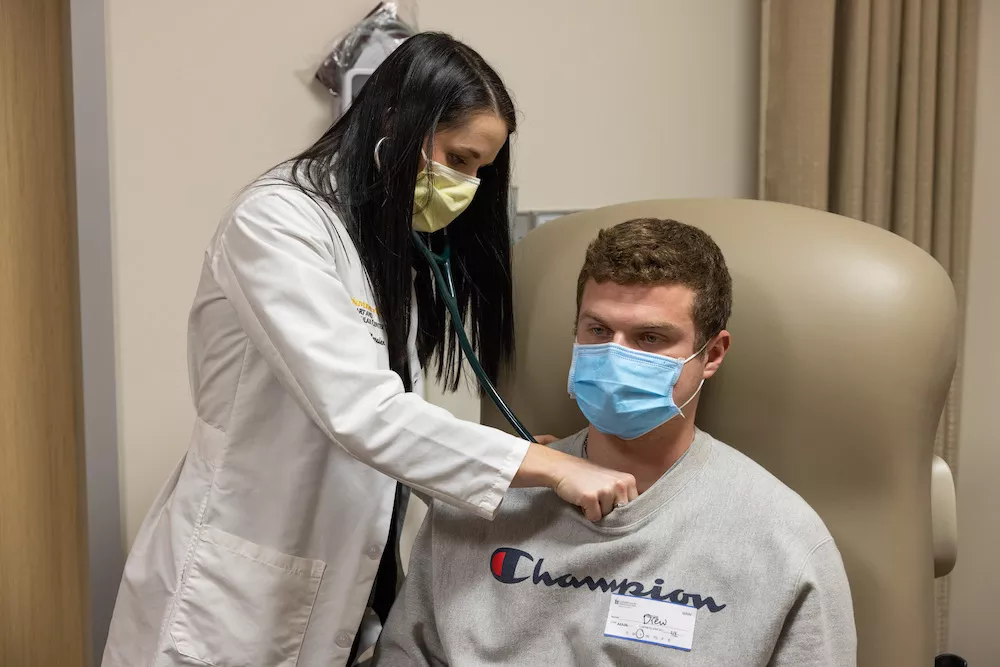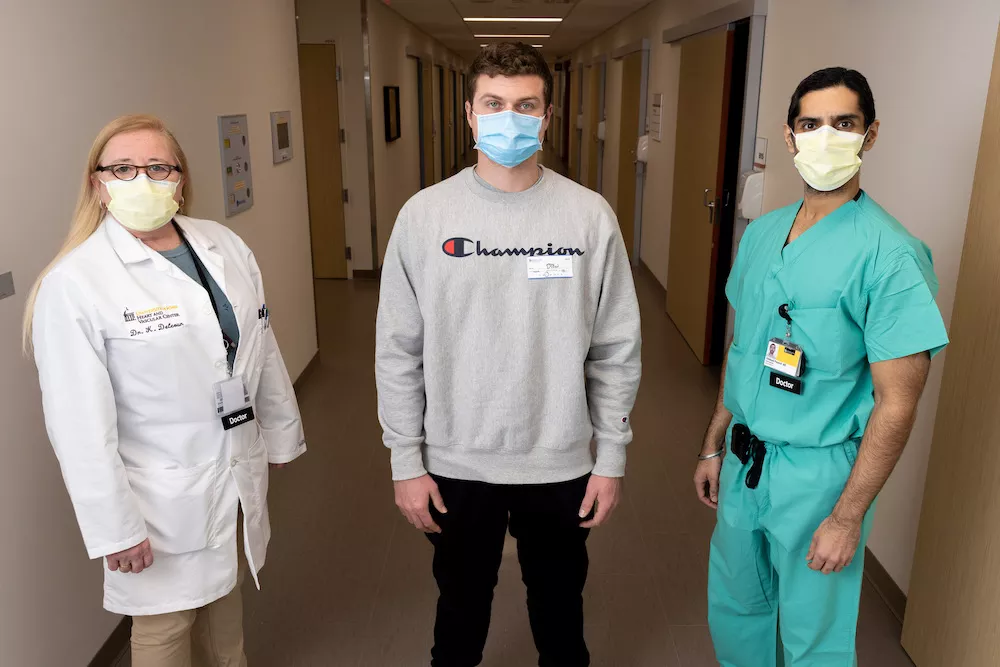After Drew's severe post-COVID-19 infection reaction, a heart pump saves his life

There isn’t much Drew Doehrmann remembers about being in the hospital when he had a severe post-COVID-19 infection reaction. He had a fever of 103.9°F, and everything was fuzzy.
“I do vaguely remember them bringing in the oxygen machine late at night,” says Drew, 25, of Williamsburg, Iowa. “My family came to see me, and I knew it wasn’t good. I had a feeling I was close to dying.”
Although his case of COVID-19 was mild, Drew had a delayed inflammatory response to the virus. That led to myocarditis, or inflammation of the heart, which meant his body wasn’t getting the blood and oxygen needed to function.
“Although they were usually older, we often saw patients like Drew who showed an inflammatory response to COVID-19 infection,” says Sidakpal Panaich, MBBS, interventional cardiologist at the University of Iowa Heart and Vascular Center. “The body starts shutting down because the heart function declines significantly.”
Panaich treated Drew with a left-side heart pump that helped Drew’s heart recover. Now Drew is back at work and building strength every day.
“I feel really good now, and my heart is getting stronger every day,” Drew says. “I was at a point in the hospital where I could barely walk, but I trusted the doctors and the process, and I know I’ll get back to where I was before.”
A post-COVID-19 infection shock
Drew had COVID-19 symptoms for a few days and recovered quickly.
But a couple of weeks later, he started feeling sick again. The symptoms were worse.
“I slept for two days straight,” Drew says. “Then, when I woke up, I was completely drenched in sweat. I felt sick to my stomach, and my entire body was sore, like I had run a marathon.”
With a dangerously high temperature, Drew went to the UI Hospitals & Clinics emergency room. Rashes appeared all over his body, and his overall health declined quickly.
“Drew is a young guy who was otherwise very healthy,” Panaich says. “But his health was deteriorating because of cardiogenic shock. Everything was heading in the wrong direction.”
In cardiogenic shock, the heart’s main pumping chamber can’t pump enough blood to the body. Without an adequate blood supply, other organs can become damaged, and the patient’s life may be at risk.

Giving the heart a break
Once the team saw that Drew’s heart was struggling, cardiologist Kimberly Delcour, DO, called in Panaich and the interventional cardiology team. They installed an Impella left-side heart pump, which helps pump blood throughout the body and gives the heart time to recover. Meanwhile, Drew’s team could treat any underlying health issues caused by the cardiogenic shock.
To install a left-side heart pump the interventional cardiologists first makes a small incision in an artery. Then they insert a catheter with a small pump at the end. Using X-ray images, the doctor moves the catheter through the arteries until the pump is in the correct position. Once the pump is in place, it moves blood from the heart into the aorta, the main artery that supplies blood to the body.
These pumps help the heart function temporarily. Most people need the pump for a few days while their heart and body recover. In Drew’s case, he needed the pump for about five days.
A renewed focus on life and love
Although his case was dire, Drew recovered about a week after Panaich implanted the heart pump. The fast decisions and quick communication between teams undoubtedly saved his life.
“With complex patients like Drew, it’s crucial to have good communication because there are many layers to managing their condition,” Panaich says. “It was a collaborative effort—the medical ICU team recognized the underlying problem and got cardiology involved at the right time.”
At his first follow-up visit, Drew’s heart was back to functioning normally, and he was building up his stamina and strength. Cardiac rehabilitation will help him get back to 100% health.
Drew says he is forever grateful to the UI Hospitals & Clinics team that brought him back to health. Now, as he and his fiancée, Kendra, look forward to their wedding in 2022, he has a new outlook on life.
“Before I was in the hospital, I was working two full-time jobs as a carpenter and farmer,” he says. “But this experience has taught me to step back and spend time doing what I want to do.”
Learn more about interventional cardiology services at the UI Heart and Vascular Center.